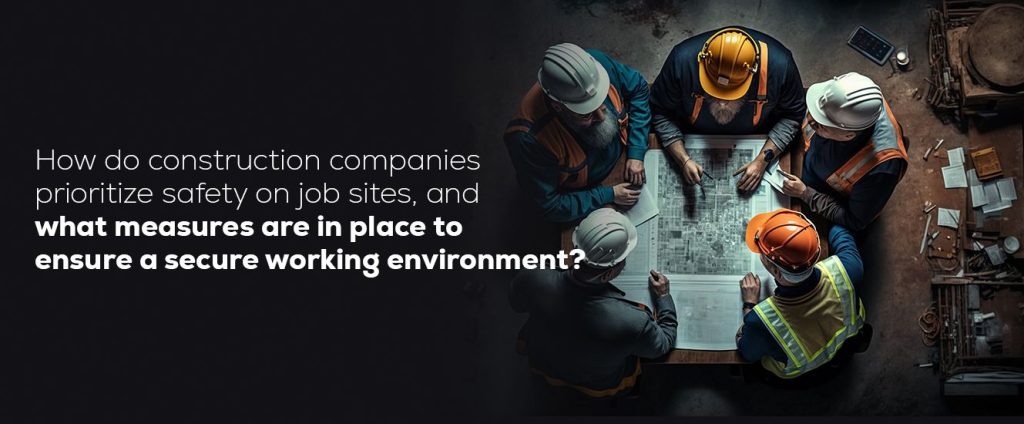
Ensuring safety is crucial for every sector, but it must be a little extra for construction sites. A recent study shows that, on average, 38 fatal accidents occur per day at construction sites in India.
Since construction is loaded with heavy machinery, complex processes, and diverse teams, construction companies must care about keeping everyone safe. But how do construction companies prioritize safety on job sites? What measures are in place to ensure a secure working environment? This blog answers these questions.
What Measures Are Taken to Ensure a Secure Working Environment on Construction Sites?
These are eight measures followed on construction sites to keep workers safe:
Educating people about the risk
The concerned authority is not only aware of the dangers and risks on the construction job site; they ensure that every worker is fully prepared for the work and educated well about the possible hazards. This helps them to stay alert.
Proper safety training
Before starting work, all workers are given thorough safety training that covers relevant protocols, procedures, and potential hazards specific to the job site.
Also, regular safety briefings and meetings are conducted to inform workers about any updates, potential risks, and best practices for maintaining safety standards.
Adding clear signage
The construction sites have proper marking of hazardous areas, equipment, and materials with appropriate signage. This alerts workers and visitors to potential dangers.
All safety protocols are readily available, including a 24-hour emergency contact number and a clear map or directions to the site office.
Other site signage includes toilets, entry and exit points, and first-aid or emergency fire equipment.
Environmental conditions are in check
As we all know, extreme weather conditions are the source of some serious safety hazards. This is why the on-site emergency plan comes with clear thresholds or criteria for workers on when to stop work in the event of a natural disaster or environmental conditions.
Installing fall protection systems
46% of all fatal falls, slips, and trips in the India in 2020 were due to falls, slips, and trips. This is why, these days, construction job sites are equipped with fall protection systems, including safety nets, guardrails, and harnesses, to prevent falls from elevated surfaces.
Equipment maintenance and inspection
Electrocutions have caused 7.2% of work-related deaths in construction.
This highlights how important equipment maintenance and inspection are. However, authorities perform routine inspections and audits to find and rectify any safety hazards or violations.
Providing personal protective equipment
Personal protective equipment (PPE) is provided to the workers to keep them safe. This equipment includes hard hats, gloves, safety glasses, and steel-toed boots. This safety equipment plays a big role in protecting workers from getting hurt by things that might fall, sharp materials, or other dangers on the job.
When workers are encouraged to report safety concerns, near misses, or incidents, actions are taken promptly.
The reality is that we can’t stop every single accident on your job site. But there are some types that you can control by regularly inspecting the site. This helps authorities track the issues and address them as soon as possible.
